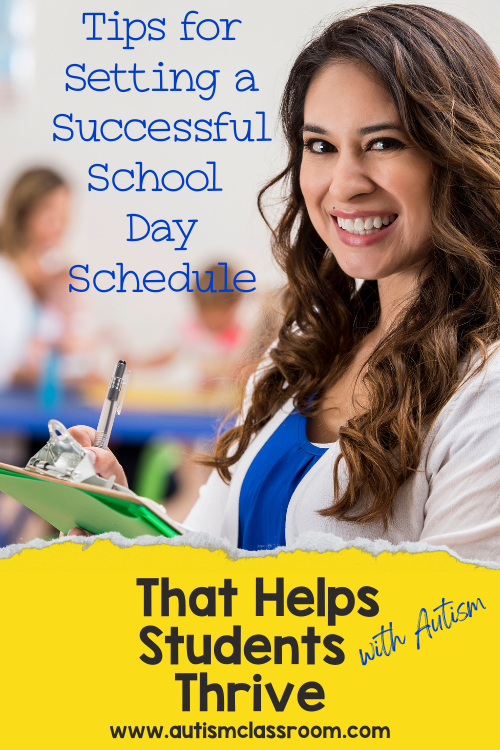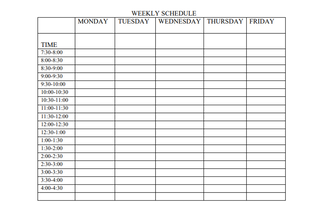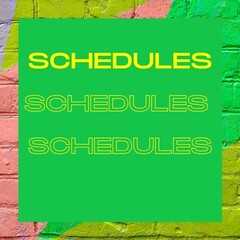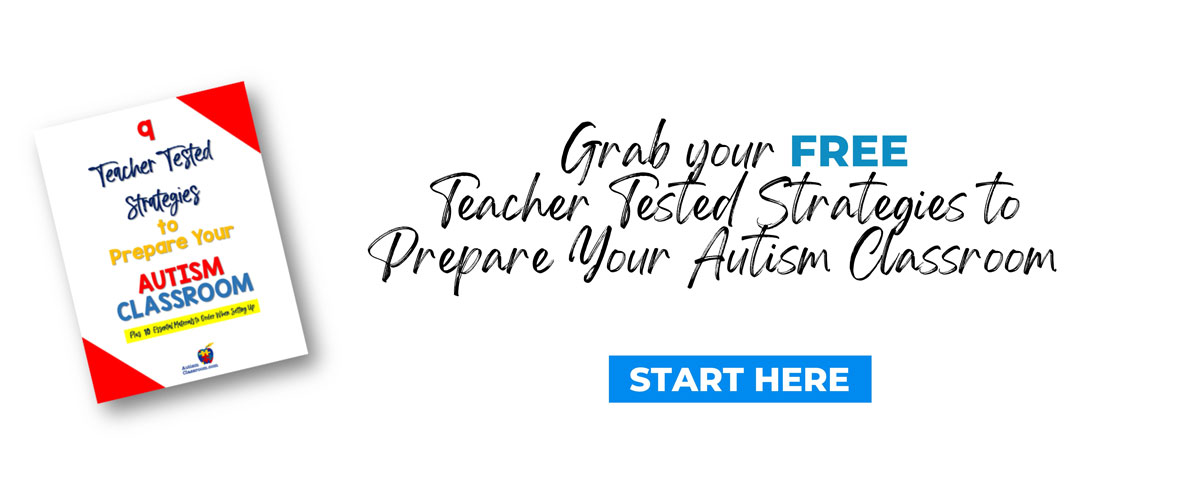Inside: Daily schedule for autism classrooms and planning a weekly schedule for an autism classroom.
If you walk into any autism or special education classroom, you are likely to see a many visuals on the walls, desks, and embedded in lessons.
It’s no secret that visuals are a crucial part of an autism classroom…or at least they should be. Our students with autism rely heavily on the use of visuals to help them learn routines, communication, structure, daily living skills and academic skills. But before that happens, we have to organize the day. Before we develop a daily schedule for an autism support classroom, we have to develop our weekly schedule.

Here are a few tips to develop a daily schedule for autism support classrooms which begins with, of course, knocking out that weekly schedule:
1. Everyone knows that having a good plan of action like a clear and meaningful daily schedule for autism support classrooms is a key to most successes in this environment. But it’s the "where to start" that ends if for most people. But not for you --- you have these inside tips…the best way to get started is to think about all of the lessons and activities you want to teach. Then think about all the activities you have to have, the non-negotiables - think bathroom, lunch, dismissal time, etc.
2. Ask around if you are new to the school. Some schools call things different names. For example, morning meeting could be called circle time in one school and class meeting at another. Or, you can just make you own labels and names for activities and be flexible enough to change them if needed.
3. Write them down. Once you have thought about the names for the activities and lessons in the classroom, write them down. Then, organize them in the sequence you think you might want them to go. If it is easier, use a table in a word or google doc to list them.

Sort of like this very old example/download from my first website.
4. Determine the amount of time you students can reasonably attend to a lesson, then allot time limits to the activities.
5. Develop the schedule first, then set up the classroom to fit your student’s scheduling needs.
6. Sequence activities in the same order as much as possible.

7. Make a consistent time for centers. While creating the schedule for your self-contained classroom, keep centers as consistent as you can. You want maximum time to work on those IEP skills!!! See the blog on centers here for more ideas on how to organize centers.
8. Include movement within the schedule with limited distractions. Breaks outside the classroom, like taking a walk can be disruptive during the high quality learning period. Save those for the afternoon. Think of some non-intrusive ways to building a break routine. Keep movement breaks easy to implement, quick and meaningful.
9. Schedule student groupings and schedule special activities (ex. Phys. Ed., Music, Computers) as consistently as possible. My Step by Step Autism Classroom Design course which helps teachers set up their classrooms has a module that focuses on building your weekly schedule and organizing your centers.
10. Make copies of the schedule, once finalized, for staff members. And… make plans to change it if needed… and they will be...schedule changes are usually needed by the 2nd week of school.
Here is a blank planning sheet where you can PENCIL in your ideas for activities and lessons for your day. Creating the daily schedule for autism support classrooms is usually the next move toward getting the classroom ready for students. You can do this!.
Let us help you on your journey!
Get emails that get you ready for the school year.
Click the yellow box below to sign up.

